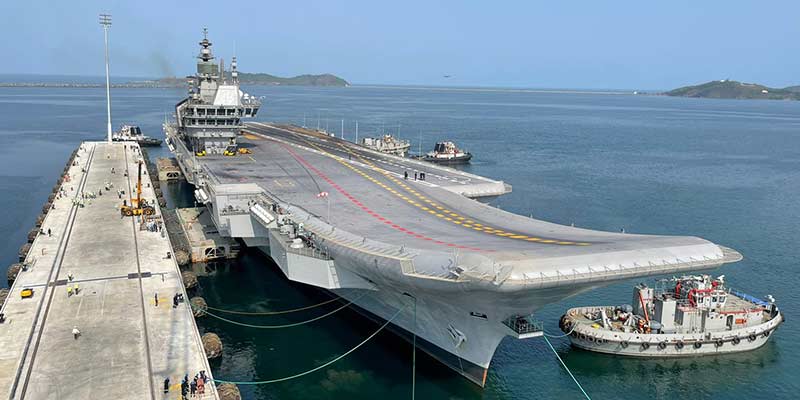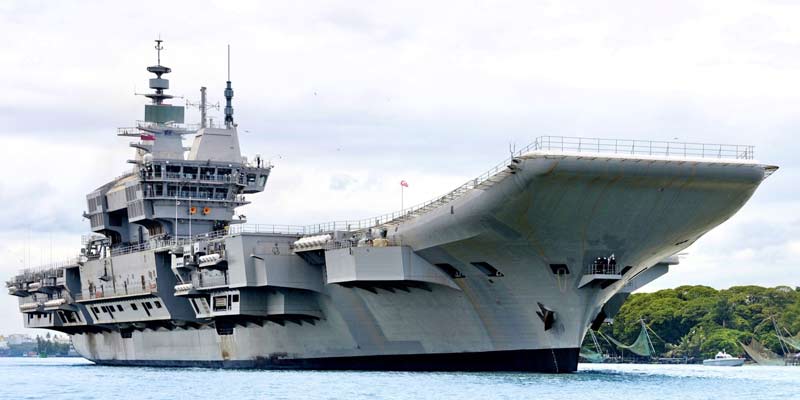- India
- May 22
What is ‘Project Seabird’?
• For the first time, India’s indigenously-built aircraft carrier INS Vikrant berthed at the strategically key Karwar naval base in Karnataka.
• The Indian Navy described the docking of the aircraft carrier at the base as a landmark in the context of ship-berthing capacity at the newly-built facility.
• In a first of its kind for the Indian Navy, this berthing of INS Vikrant at the new aircraft carrier pier with a two-deck configuration providing enhanced ship support facilities is a substantial infrastructural feat.
• The Indian Navy is expanding the strategically crucial naval base in Karnataka’s Karwar as part of ‘Project Seabird’.
Project Seabird
• In the early 1980s, then Chief of the Naval Staff Admiral Oscar Stanley Dawson conceived of a dedicated naval base near Karwar in Karnataka.
• In 1999, the then Defence Minister George Fernandes approved ‘Project Seabird’ to pursue the construction of the new naval base at Karwar.
• Over 5 km of breakwater were constructed using over 44 lakh cubic meters of rock to protect the harbour.
• Spread over an area of 45 sq km and 23 km of coastline on the Arabian Sea, phase 1 of the base — INS Kadamba — was commissioned in May 2005.
• Naval Ship Repair Yard (Karwar) has been set up as a repair and refit organisation, as part of phase 1 of ‘Project Seabird’. The Yard opened operations in July 2006 and the shiplift was commissioned in November 2006.
• Development of phase 2 of INS Kadamba commenced in 2011.
• Once the base is fully operational, it will be one of the largest naval bases in Asia.
INS Vikrant
• It is the largest ship ever built in maritime history of India and houses state-of-the-art automation features.
• With the commissioning of INS Vikrant, India has forayed into a select league of countries having the niche capability to indigenously design and build an aircraft carrier.
• India now has two operational aircraft carriers, which will bolster the maritime security of the nation.
Aircraft carriers in India
• An aircraft carrier is a warship designed to support and operate aircraft, engaged in attacks on targets afloat or ashore and to undertake sustained operations in support of other forces.
• An aircraft carrier is central to the operational requirements and fleet doctrine of the Indian Navy and is the only means of ensuring air defence of sea.
• INS Vikrant, India’s first aircraft carrier was acquired from Great Britain and commissioned on March 4, 1961. INS Vikrant was a Majestic class CATOBAR (Catapult Assisted Take Off but Arrested Recovery) carrier and operated Sea Hawk fighters, Alize (Anti-Submarine Warfare) aircraft and Seaking helicopters.
• India next acquired HMS Hermes, a Centaur class STOVL (Short Take-off and Vertical Landing) carrier and a veteran of the Falkland War. INS Viraat was commissioned on May 12, 1987 as India’s second aircraft carrier and India’s first STOVL carrier operating the Sea Harrier aircraft.
• Soon after the acquisition of INS Viraat, INS Vikrant was also converted from a CATOBAR carrier to a STOVL carrier.
• INS Vikramaditya was commissioned on November 16, 2013. INS Vikramaditya is a Kiev class aircraft carrier which was commissioned by the Russian Navy in 1987 under the name Baku. It was later renamed as Admiral Gorshkov and last sailed in 1995 in Russia, before being offered to India. The 44,500 tonne warship has a length of 284 metres.
• INS Vikrant was decommissioned in January 1997.
• INS Viraat was decommissioned in 2017.
Manorama Yearbook app is now available on Google Play Store and iOS App Store


